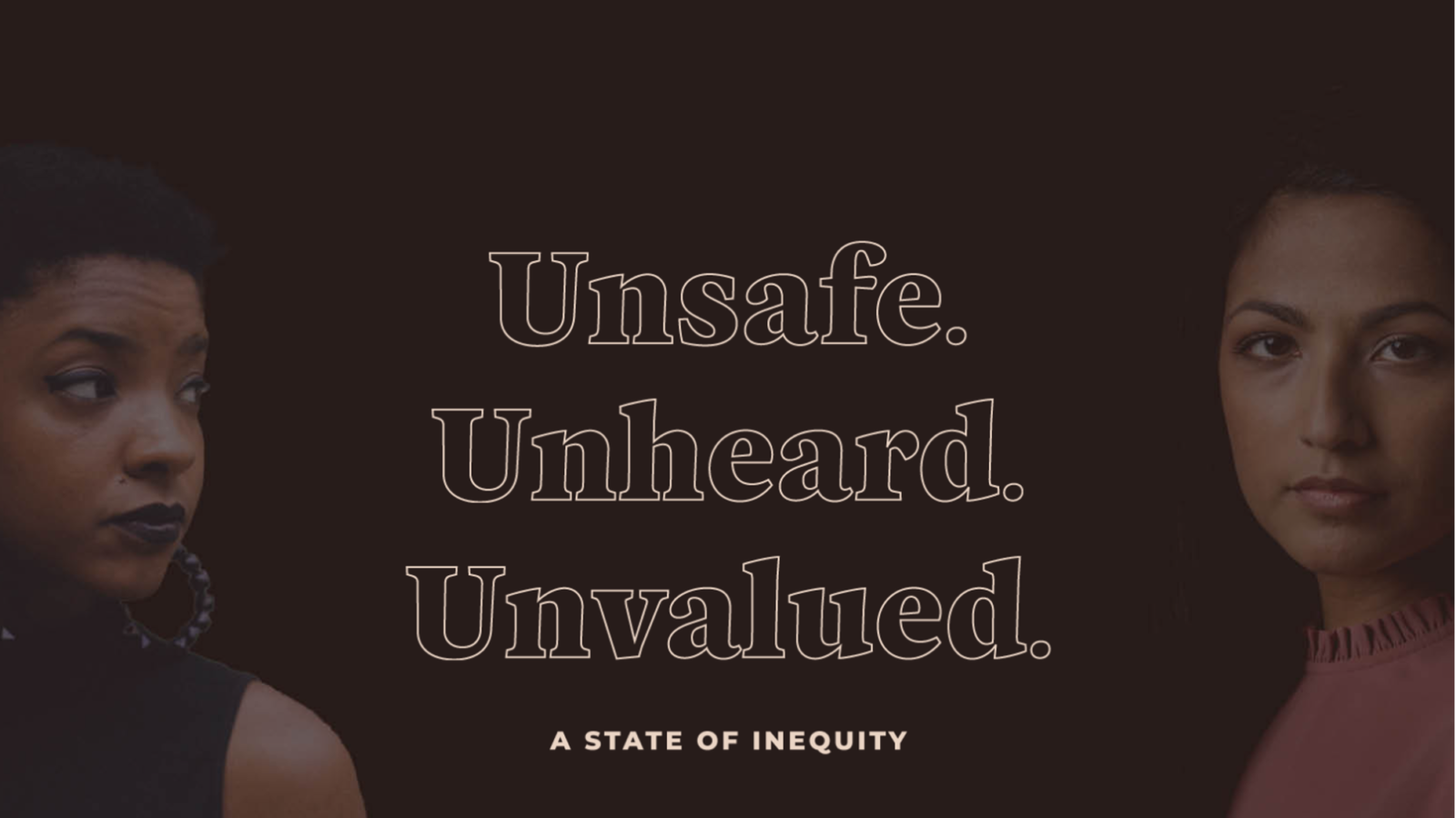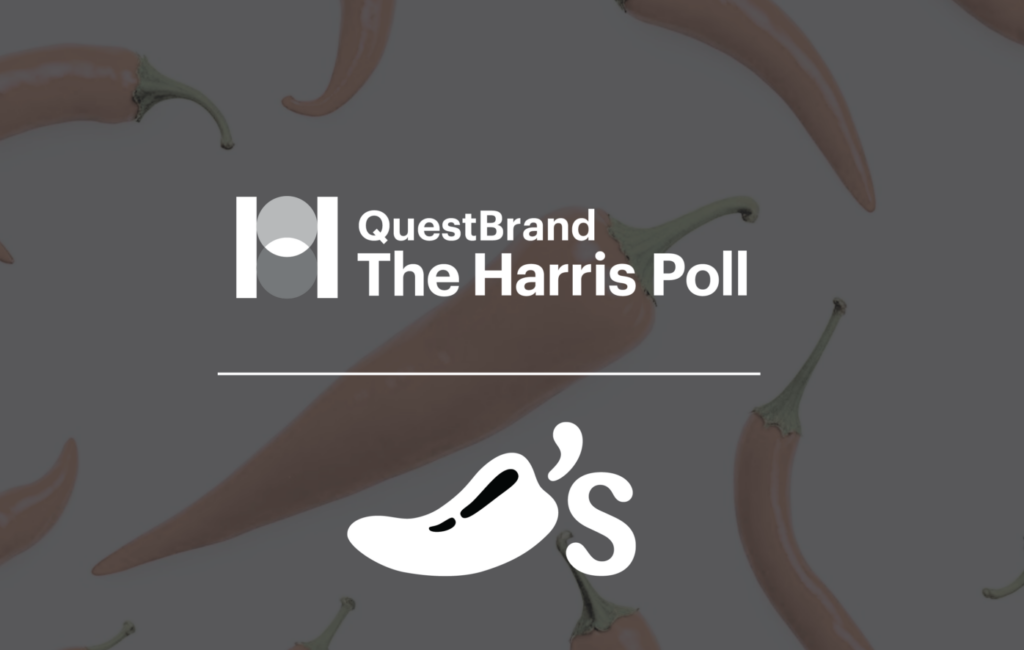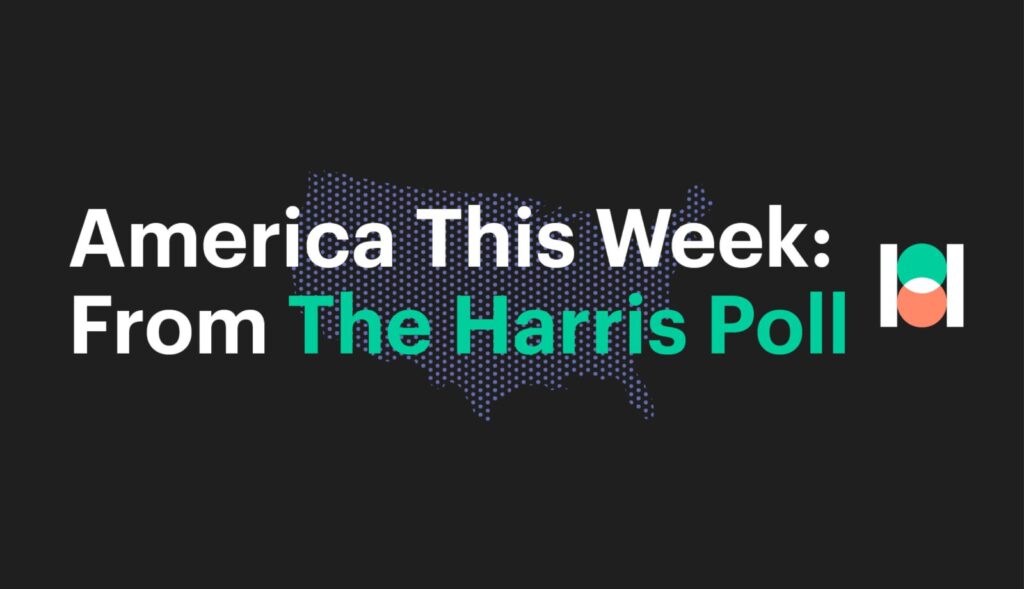Brief • 5 min Read

More than a year beyond the racial justice protests of 2020, American workers reveal that there is still a long way to go in creating diverse and equitable workspaces. With many currently and recently employed individuals reporting similar levels of workplace struggles and attitudes toward work compared to when Hue and The Harris Poll last surveyed, it is clear companies and organizations have yet to meet the demands of employees of color.
Although many storylines are similar to last year’s report, there are noteworthy increases in reported workplace discrimination among employees of color, especially among Hispanics, East Asians and Pacific Islanders, and multiracial employees. Additionally, when assessing the effectiveness of diversity, equity, and inclusion (DE&I) initiatives this time, we discovered employees often found antiracism and racial awareness efforts implemented by their employers to be ineffective.
About This Study
This year’s study was conducted in December 2021 among 2,163 adults in the U.S. by The Harris Poll on behalf of Hue. Many of its findings are trended from the previous wave of this study, which was conducted in December 2020 among 2,049 adults. Figures for age, sex, race/ethnicity, education, region, household income, and Internet use were weighted where necessary to bring them into line with their actual proportions in the population. This has allowed us to accurately represent the attitudes and experiences of American workers.
Unless otherwise specified, terminology referring to “employed Americans,” “American employees,” or “employees” should be considered to include both those who are currently employed and those who were recently employed at a company they do not own. Such a grouping allows us to accurately reflect the perspectives of American workers, many of whom have seen their work statuses fluctuate significantly during the COVID-19 pandemic.
Unless otherwise specified, any terminology referring to “last year” refers to data published in the 2021 State of Inequity report.
The term BIPOC refers to Black, Indigenous, People of Color and highlights the unique experiences that Black and Indigenous people have faced, which directly shape the experiences for other Americans of Color.
This study was also conducted separately among members of Hue’s community during the same time period. More information on the experience of Hue members can be found in the official report on Hue’s website.
All year-over-year changes mentioned in this report are percentage point increases or decreases.
Small Steps Forward
Companies still have a long way to go in providing DE&I resources to their employees. One year later, there is still no common DE&I resource that most American employees say their company has.
According to American employees, the most common DE&I resources available at their companies are documentation on employee evaluations (39%), mental health resources or trainings (31%), floating holidays to accommodate religions and cultural practices (30%), documentation on how salary is determined (28%), and employee resource groups (26%).
However, the share of those reporting no DE&I resources has declined. Compared to 21% last year, today, only 14% of Americans report their employer has no DE&I resources at all.
Similar to last year, less than a quarter of employed Americans report their current or most recent employer invested in any diversity recruiting-related initiatives over the past six months.*
The most common diversity recruiting-related initiatives implemented by employers over the last six months were instituting racial awareness training (18%), increasing recruiting efforts toward racially diverse hiring (17%), making a commitment to (17%) and meaningful progress on (16%) building a more equitable environment for employees of color, and hiring someone to lead diversity and inclusion (14%).
Similar to last year, 31% (+1%) of Americans reported that their company hadn’t invested in any diversity recruiting-related initiatives at all in the past six months.
That said, similar to last year, most employed Americans agree that the industry of their employer does a good job of implementing diversity-related initiatives (79%, +1%). This share of agreement holds specifically among Employees of Color, too.
BIPOC Retention: Corporate’s Struggle with Recruitment Follow-Through
Although, based on employee perspectives, companies do appear to be working harder to recruit diverse talent, companies are no doing enough to retain this talent. Especially for Employees of color that have left an employer shortly after being hired, uncompetitive pay and the desire to improve mental health are top reasons for leaving.
Nearly one in 10 professionals report that they have started a new job in the last 12 months, especially those of Hispanic or Asian descent (11% and 12%, respectively).
Unsurprisingly, younger employees also have been moving around more often than their older counterparts. Roughly one out of ever six Millennials (16%) and Gen Zers (14%) report they have started a new job in the last 12 months, compared to just 9% of Gen Xers and 2% of Baby Boomers.
However, 20% of professionals that started a job within the last 12 months report that they left their most recent employer after less than a year; another 44% left after less than two years.
Digging deeper, a quarter of all Employees of Color that started a job in the last 12 months report that they left their most recent employer after less than a year compared to only 18% of White professionals in the same situation. Such exits were especially common among Hispanic professionals (41%), multiracial professionals (35%), and female employees of color (28%) who had started a new job in the last 12 months.
Similarly, younger employees have struggled to stay with their employers more often than their older counterparts. Two in five Gen Zers (42%) — that is, adults ages 18 to 25 — that started a new job in the last 12 months report that they were at their previous employer for less than a year, compared to 21% of Millennials and 10% of Gen Xers.
Why are they calling it quits so soon?
The most common reasons these professionals left their employers were to get a higher salary (28%), to have more opportunities for advancement (25%), and to improve their mental or emotional health (25%). Employees of Color, especially African Americans and Hispanics, often cited a higher salary as the top reason for leaving their employer while White professionals say they left more often for advancement opportunities.
Psychological and emotional well-being as a reason for leaving held across ethnicities. However, younger generations show a greater preference for mental health while older generations prioritize money. Among those that started a new job in the last 12 months, Millennials cited leaving their most recent employer to improve their mental health twice as often as Gen Xers (33% vs. 14%, respectively). A third Gen Xers (31%) and Baby Boomers (36%) who had started new jobs in the last 12 months noted they left their most recent employer to get a higher salary.
Such trends match those of employees who started a new job in the last 12 months and left that job within less than a year. Top reasons for leaving included improving mental and emotional health, advancement opportunities, a desire for better company culture, and switching to a different industry.
Representation Matters More Than Ever
employees still want to see others who look like them in the workplace. Representation in the workplace matters to all employees — even more than it did last year — but it remains especially important for Black and East Asian/Pacific Islander employees, tenured employees, and young Professionals of Color.
Seventy percent of all employees agree that seeing others who look like them or are from the same racial/ethnic background as them in the workplace motivates them. This us up 9% from last year.
For all Employees of Color, this sentiment climbs to 79% (+6%) compared to just 63% of White employees (+7%). Digging deeper, Black (87%, +12%) and East Asian/Pacific Islander (81%, +8%) are the most in agreement with this sentiment.
Looking to those in places of power at their companies, Employees of Color remain motivated by seeing people in leadership positions who share the same racial/ethnic background as them. More specifically, employees who feel this way include 87% of African Americans (no change), 75% of East Asians and Pacific Islanders (+18%), and 70% of Hispanic employees (-7%). White employees also share this sentiment, albeit at a lower level than Employees of Color — just 62% — but this still represents an increase of 12% for this group compared to last year. It is clear that most employees are looking for role models who look like them; however, it appears many employees have to compromise on this desire.
Employed Americans remain divided on whether diversity in leadership affects their willingness to work at a company. Just over half of employees agree that they would be comfortable working at a company that lacks racially or ethnically diverse leadership as long as there is diversity at lower levels (52%, no change). Ethnic minorities are also equally divided on this point (50%, -1%).
For tenured employees of color, representation also matters more, and this has grown over the last year, too.
Eighty-six percent (+8%) of Employees of Color with six to 10 years of professional experience in their industry of employment agree that seeing others who look like them or are from the same racial or ethnic background as them in the workplace motivates them. This is also true for White employees, albeit again at a lower frequency (71%, +7%).
About the same number of Employees of Color with six to 10 years of industry experience are also motivated by leadership who looks like them compared to White employees with the same tenure (85%, +9% vs. 66%, +16%, respectively).
Such trends also hold for well-seasoned professionals. Three quarters of Employees of Color with more than 10 years of experience in their industry still agree that seeing others who look like them or are from the same racial or ethnic background as them in the workplace motivates them (77%, no change vs. 64% of White employees, +11%).
Moreover, 70% (-1%) of Employees of Color with more than 10 years of experience are also motivated by leadership that looks like them in the workplace, slightly higher than their White counterparts (64%, +16%).
A new development this year is how increasingly important representation is to those new to their industry.
The overwhelming majority of Employees of Color (90%) who have been working in their industry for less than three years say they are motivated by seeing others who look like them in the workplace. This represents a sizable uptick of 26% from last year. Such sentiment especially high when compared to the 53% (-3%) of White employees while feel the same way.
Although industry newcomers are not as reliant on representative leadership for motivation, there has been a noteworthy uptick of Employees of Color who say they are motivated by seeing leadership from the same racial background as them (71%, +13%). Additionally, while the overall share of White employees who feel the same is lower (58%), their growth in this sentiment has kept pace with Employees of Color at 14%.
In fact, upticks in motivation via workplace representation across all ethnicities points to a growing desire by all employees to feel they belong where they work and that they can grow where they work. It seems many have had that wish granted already. Although such sentiment varies by race and ethnicity, most Americans agree that people from all backgrounds feel included at their company (81%, -1%).
Prioritizing Mental Health
Americans still overwhelmingly value mental health in the workplace.
Today, 88% (+3%) of American employees agree they want to work at a company that prioritizes their mental and emotional health as well as their well-being, and currently 77% (+2%) of employees agree that their employer’s leaders care about their health and well-being.
Unchanged from last year, 70% of American employees still agree they would leave a job where their employer does not prioritize mental and emotional health and well-being. Fortunately, most employees (73%) say they feel comfortable speaking out about burnout, fatigue, and other emotional strain they have experienced at work.
As a result, not only do most Americans feel physically safe at work (91%, +4%), they also feel mentally safe at work, too (86%, +2%). It is worth noting that the increase in those working remotely may also have contributed to maintaining and slightly increasing the share of those who feel safe while working.
While these positive trends hold across the general population, as explored later in this report, the level of agreement varies significantly, especially when examined through the lens of ethnicity and gender.
Many American workers have experienced increased instances of exhaustion and burnout because of work throughout 2021. However, ethnic minorities, especially Hispanics and East Asians or Pacific Islanders, report higher levels of workplace burnout over the last 12 months compared to all American employees.
Two in five American employees (38%) say they have experienced exhaustion or burnout in the last 12 months because of their workplace. This is an uptick of 7% from when we asked this question last year.
Compared to a third of White employees (34%, +6%), a larger number of Employees of Color report feeling exhausted or burned out over the last 12 months because of work (44%, +4%). Digging deeper, those reporting burnout most often are Hispanics (47%, +8%), East Asian or Pacific Islanders (47%, +11%), and African Americans (41%, +1%).
However, within the last six months, workplace burnout has generally remained constant. Thirty-seven percent of all American employees report experiencing work-related exhaustion and burnout in the last six months. Again, 44% of all Employees of Color report experiencing exhaustion or burnout due to work during this time period. Digging deeper, compared to 32% of White employees, those reporting burnout most often in the last six months were Hispanics (50%), East Asian/Pacific Islanders (42%), and African Americans (37%).
Undoubtedly, such situations continue to affect one’s sense of comfort at work.
Today, the sense of physical safety at work continues to fluctuate across groups. This is likely influenced by varied remote, hybrid, and in-person work models and the differences in industries that alter the number and types of employees spending time in the workplace.
Compared to 7% of White employees, 16% (+13%) of East Asian/Pacific Islander employees, 12% (-6%) of Hispanics employees, and 9% (-14%) of Black employees disagree that they feel safe at work physically.
Such varied differences also hold for mental and emotional safety, too. However, several minority groups report improvements compared to last year. Again, this could be influenced by workplace changes due to the pandemic. Currently, compared to 14% (+2%) of White employees, 22% (+2%) of East Asian/Pacific Islander employees, 17% (-7%) of Black employees, and 10% (-12%) of Hispanics disagree that they feel mentally and emotionally safe at work.
Overall, similar to last year, about one in six American employees (16%, +2%) do not feel comfortable being fully themselves at work. This is slightly higher specifically for employees of color at 19% (+2%).
Revisiting the Employed BIPOC Experience
Generally, both White employees and Employees of Color continue to agree on the initiatives and resources their employers have implemented as well as the treatment they have received. However, the more noteworthy disparities between the experiences of White employees and Employees of Color occur regarding burnout, equal pay, and race-related discrimination at work.
When it comes to equal pay, compared to only 18% (no change) of White employees, a quarter (24%, -4%) of Employees of Color disagree that they are paid fairly and in a comparable way to other colleagues at their level where they work.
Looking across their company, about the same amount of White (21%, +1%) and BIPOC employees (23%, -8%) disagree that they are paid fairly and in a comparable way to other people across their company. This is a narrowing of the gap compared to last year (from 11% to 2%) and may be indicative of companies adjusting salaries to better compensate Employees of Color over the past year. It may also represent the ongoing influence of The Great Resignation, whose byproduct has been a demand for higher salaries by workers who are moving to new jobs.
Regarding race-related discrimination, compared to 12% (-3%) of White employees, nearly four times as many Employees of Color (40%, +9%) have experienced workplace discrimination related to their race or ethnicity during their career.
Compared to 8% of White Americans, 29% of Employees of Color say they have experienced job loss due to discrimination related to their race or ethnicity at some point in their career. This is even higher for Hispanic (32%) and multiracial (31%) employees.
While last year about twice as many Employees of Color said they had suffered financial or economic hardship due to their race or ethnicity, this year three times as many Employees of Color (31%) say this is true for them compared to White employees (10%). This is higher (35%) for Black employees. It is likely that such and increase is due, in part, to the influence of the COVID-19 pandemic.
Unfortunately, ethnic minorities still feel less empowered to speak out against discrimination. Similar to last year, compared to 16% of White employees (no change), twice as many Employees of Color (32%, +2%) say they have felt unable to speak out against discrimination they have witnessed or experienced based on their race or ethnicity.
Consequently, it should come as little surprise that, compared to 21% (+1%) of White employees, a third of Employees of Color (32%, -1%) say they have changed career direction or industry due to issues of mobility or career growth. This is slightly higher for Hispanic professionals at 35% (-1%).
Adding Gender to the Equation
The continued disparity in views and treatment between White men and Women of Color reveals companies have a long way to go in creating a sense of equity among employees.
(In some cases, though less often than last year, the workplace experiences of White women were directionally aligned with BIPOC women although they reported such experiences at a lower frequency than women of color. Therefore, some of these situations speak more broadly to gender inequality than just gender-race inequality specifically.)
Overall, just over a quarter of all U.S. employees report that their company has more People of Color (29%) or more women (27%) than it did one year ago. Therefore, it is important that workplaces prioritize equitable environments and experiences for this influx of historically marginalized employees, especially for employees who deal with being members of more than one marginalized community, such as Women of Color.
When asked how well their current or most recent employers had address the following, fewer BIPOC women than White men still say their companies have addressed DE&I opportunities, but the gap has closed in some regard.
Fewer employed BIPOC women than employed White men say their company has done a somewhat good job addressing
- advancement within the company (74% vs. 80%, respectively, a gap shrinkage of 4%),
- fair and equitable promotion of employees (74% vs. 79% a gap shrinkage of 4%),
- increasing visibility of employees of color (75% vs. 78%, a gap shrinkage 12%),
- ensuring racially/ethnically diverse leadership (73% vs. 77%, a gap shrinkage 12%),
- ensuring gender diverse leadership (75% vs. 82%, a gap expansion of 1%),
- recruiting people of color (71% vs. 76%, a gap shrinkage 6%),
- providing equal access to opportunities for people of color (77% vs. 81%, a gap shrinkage 6%),
- providing resources supporting the emotional or mental health of historically marginalized groups (61% vs. 71%),
- retaining employees of color (71% vs. 76%), and
- promoting employees of color (69% vs. 73%).
It is important to keep in mind that these sentiments are in part influenced by the general differences in the places where BIPOC women and White men work. These gaps in sentiment will also continue to expand or close based on how the workplaces to which these groups gravitate changes. The current trend of shrinkages does not mean that these gaps will continue to shrink in the future. At the same time, so many shrinking gaps could indicate that companies are taking the equity of opportunity and workplace experience more seriously, or it could indicate that BIPOC women are moving to workplaces with more equitable environments — to name a couple.
A potentially more interesting finding this year is that in several situations, Men of Color actually report more often than White men that their employers have addressed all of the DE&I issues listed above except for ensuring gender diverse leadership. This was not at all the case last year. It is possible that BIPOC men are also moving to workplaces with more equity-focused environments, or that they are working at places that (on average) have decided to take equity seriously more often than the places where White men and BIPOC women work.
All this said, when returning to workplace disparities between BIPOC women and White men, the two groups continue to differ on equal pay.
Compared to 17% (+4%) of White men, 30% (-2%) of BIPOC women disagree that they are paid in a fair and equitable way compared to other colleagues across their company. Additionally, compared to 15% (+2%) of White men, 30% (+1%) of BIPOC women also disagree that they are paid in a fair and equitable way compared to other colleagues at their level.
No doubt, some of this pay inequality is affected by the types of places where members of each group are employed. This is further reflected in the DE&I resources these employees say are available at their companies. In fact, many of these resource disparities are unchanged from last year.
Compared to 34% (+1%) of BIPOC women, 43% (-1%) of White men work at a company with employee evaluations.
The availability of antiracism training in the workplace appears to be going down. Only a quarter (25%) of both White men and BIPOC women report antiracism or race-awareness training in their workplace, down 2% and 13%, respectively. Overall, only 24% of all employees report that antiracism training is available in their workplace, down 4% from last year.
Moreover, more White men still report having worked at companies with mentorship programs (26%, +3%) than Women of Color (21%, +7%).
In general, most Americans do feel empowered and included at work. However, unsurprisingly, Women of Color continue to feel they have less of a voice and sense of inclusion at their employers compared to White men.
When it comes to opportunities for success in their careers, the disparity between White men and Women of Color is still large. Compared with only 18% (+4%) of White men and 21% (-1%) of all Americans, 31% (+6) of Women of Color disagree that they have the same opportunities and changes to succeed as any other person within their company.
Despite the many who feel they lack equal opportunity, most Women of Color think they still have the authority needed to drive change at work. In fact, about two-thirds of both BIPOC women (63%, +1%) and White men (62%, -2%) say that they have the authority to drive change in their organization. Interestingly, only 52% of White women report having this authority.
There is still some way for companies to go with creating a sense of inclusion across different ethnic and ethnic-gender groups. Overall, compared to 84% (-2%) of employed White men, slightly fewer employed Women of Color (76%, -2%) agree that people from all backgrounds feel included at their companies. Eighty-four percent (-1%) of all American employees agree that they can be fully themselves at work. This is slightly higher for employed White men (88%, -2%), but much lower for employed Women of Color (77%). In fact, the level of BIPOC women who feel this way compared to last year has dropped significantly by 11 points.
From the Company’s Point of View
Like last year, compared to all employees, human resources professionals continue to say more often that they work for employers that offer DE&I resources. This disparity may underscore how much HR professionals are committed to working at companies that care about equitable workspaces, or it may highlight that HR professionals have access to resources that the average employee cannot access or does not know exist.
Compared to all employees, HR still professionals say more often that their companies have DE&I resources such as mental health resources or training (31% vs. 44%, respectively), documentation on how salary is determined (29% vs. 41%), employee resources groups (26% vs.34%), and mentorship programs (18% vs. 33%).
However, compared to all employees, HR professionals report less often that their company has bias training (24% vs. 18%, respectively) and documentation on employee evaluations (35% v. 39%). Granted, the employees surveyed respondents do not all work within the same company, but this disparity may speak to HR professionals having access to documentation that the average employee cannot access or does not know exists.
HR professionals are also more optimistic about their industries’ approach to people of color.
Compared to 79% (+1%) of all employees, 82% (-8%) of HR professionals agree their industry does a good job of implementing diversity-related initiatives. Similarly, when asked to rate their employers’ effectiveness with such initiatives, more than eight in ten HR professionals reported their companies were effective.
Perhaps unsurprisingly, HR professionals are more likely to be employed by places that have implemented more DE&I resources in the last six months.
Compared to all employed Americans, more HR professionals say their company has made a commitment to build a more equitable environment for employees (17% vs. 22%, respectively), made meaningful progress on building a more equitable environment for Employees of Color (16% vs. 25%), held town hall meetings or company-wide meetings to promote diversity and inclusion (14% vs. 28%), and hired someone to lead diversity and inclusion (14% vs. 27%) in the last six months.
Despite the differences between all employees and HR professionals with the existence of such initiatives at work, for all employees who say their companies have implemented these initiatives in the past six months, about nine in ten say they have been implemented effectively.
For employees whose companies have not implemented D&I initiatives in the last six months, approval of existing efforts is more moderate. In fact, there are no initiatives that more than 50% of these employees say have been implemented effectively.
Still, the initiatives with moderately high effective ratings include making meaningful progress on building a more equitable environment for employees of color (49%), making a commitment to build a more equitable environment for employees of color (45%), increasing recruiting efforts toward racially diverse hiring (45%), and investing financially in recruiting (44%) and promoting (44%) racially diverse employees.
A Marketer’s Perspective
Given Hue’s focus on supporting those who work in marketing-related functions, this study also sought to explore how those working in marketing, communications, advertising, or design fare against employees with other job functions.
Unlike last year, when marketers consistently fell behind other job functions when evaluating their experiences with workplace diversity and inclusion, this year, marketers land in the middle when compared to other job functions. Engineering and product development functions, and occasionally finance, still frequently outperform those who work in marketing functions. However, there are some situations where marketers actually outrank the other job functions surveyed this year.
For example, when compared to other job functions like sales, operations, finance, engineering, product development, and human resources, marketers say most often that their employer does a good job with implementing diversity-related initiatives (91%), the fair and equitable promotion of employees (86%), and promoting employees of color (84%). They also say most often that they have had the authority to drive change within their job (84%).
These D&I initiatives appear to be working as marketers also say more often than other job functions that their company has more People of Color than it did one year ago (49%).
At the same time, they tie with produce development employees for experiencing racial discrimination in the workplace (41%), but they say most often that they have been unable to speak out about racial discrimination they’ve experienced or witnessed (49%).
Although mental health is often a concern within the marketing industry, marketers say most often compared to other job functions that their employer’s leaders care about their health and well-being (88%). This is especially important since they are also the most willing to leave a job where their employer does not prioritize mental health (89%).
Many of these sentiments and experiences are reported less often when looking at the aggregated group of those who work in marketing functions or the marketing industry (but not necessarily in a marketing role). This reveals that such issues with D&I maybe an industry problem, but are especially prevalent among those that work in marketing, communications, advertising, or creative roles.**
However, even with some organizations pushing D&I and well-being efforts, or even with marketers making moves to more socially responsible companies, marketers agree least often compared to other job functions that they are comfortable being themselves at work (72%) or that people from all backgrounds feel included at their company (66%).
Looking Forward
Though gaps appear to be closing for some groups and improvements have been reported among those working in particular industries, similar to last year, it is clear that there is still much work to be done in creating an equitable workplace for employees regardless or ethnicity as well as gender. With 2022 still in its early months, organizations still have the opportunity to build on the progress that has been made over the last year as well as remedy situations that have worsened.
Research Notes
*It is important to note, though, that this does not mean that less than a quarter of companies have made an effort to support diverse recruiting. The intent of the question asked was to understand the share of employees who say their employers have made recent (i.e., within the last six months) investments in diversity-related recruiting. It is likely that, for some employers, such initiatives were implemented before the 6-month period respondents were asked about, and that the total number of companies that are now engaging in diversity-related recruiting is higher than the values provided for the 6-month range.
**These year-over-year improvements in relative rankings could be for several reasons; this report does not explore what those specific reasons are. Speculative but informed reasons may be that marketing companies are more aware of the need to improve diversity and inclusion for employees, marketing employees have made moves to new employers that take better care of their employees, or the Great Resignation has meant that an industry known for mistreating employees is dealing with employees that have higher expectations. The noted increase of People of Color at places where marketers work over the last year may indicate marketing organizations are trying to do better at diversity and inclusion, too. (Although the sample size for this data point is too small to be conclusive, this study found marketers say most often that their employers have been effective at making the workplace a more equitable place for People of Color, directionally showing that marketing companies are taking steps to do better). In short, marketing organizations seem to be undergoing a reckoning as a result both of 2020 events but also as a result of more demanding talent due to the pandemic and Great Resignation.
Methodology
A survey of the U.S. general population was conducted online within the United States from December 4, 2021, to December 6, 2021, among 2,163 adults (aged 18 and over) by The Harris Poll on behalf of Hue, an organization focused on diversity and inclusion for marketers. Figures for age, sex, race/ethnicity, education, region and household income were weighted where necessary to bring them into line with their actual proportions in the population. Propensity score weighting was used to adjust for respondents’ propensity to be online.
All sample surveys and polls, whether or not they use probability sampling, are subject to multiple sources of error which are most often not possible to quantify or estimate, including sampling error, coverage error, error associated with nonresponse, error associated with question wording and response options, and post-survey weighting and adjustments. Therefore, the words “margin of error” are avoided as they are misleading. All that can be calculated are different possible sampling errors with different probabilities for pure, unweighted, random samples with 100% response rates. These are only theoretical because no published polls come close to this ideal.
Respondents for this survey were selected from among those who have agreed to participate in our surveys. The data have been weighted to reflect the composition of the adult population. Because the sample is based on those who agreed to participate in the online panel, no estimates of theoretical sampling error can be calculated.
This survey was also conducted online within the United States among 190 Hue members from December 6, 2021, to December 16, 2021, by The Harris Poll on behalf of Hue. Figures were not weighted in order to reflect the true composition of the organization. Respondents for this survey were selected from among those who were members of Hue and had agreed to participate in this survey. Because the sample is based on those who agreed to participate in the online panel, no estimates of theoretical sampling error can be calculated. For more information on methodology, please contact Dami Rosanwo, Madelyn Franz, or Andrew Laningham.
Read the full report at Hue.
Subscribe for more Insights
Subscribe to our newsletter for the latest trends in business, politics, culture, and more.
Related Content









